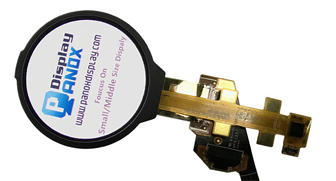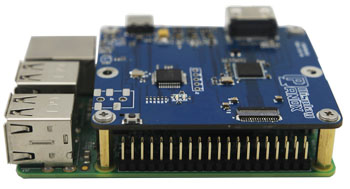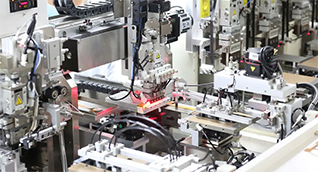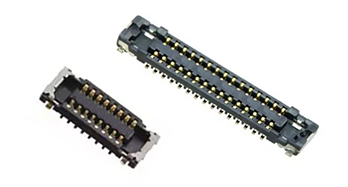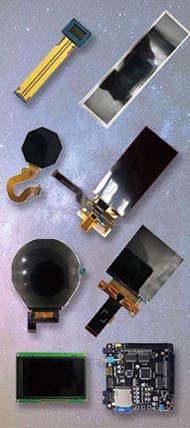OLED (Organic Light Emitting Diode) is an advanced display technology that produces images by emitting light from organic compounds in each pixel, delivering superior contrast, vibrant colors, and energy efficiency. It is widely used across industries needing high-quality, flexible, and thin displays. Also check: OLED
What Is OLED and How Does It Work?
OLED stands for Organic Light Emitting Diode, a display technology where pixels emit light individually when an electric current passes through organic layers. This eliminates the need for backlights, enabling thinner, flexible screens with exceptional color accuracy and deep blacks.
OLED panels use carbon-based organic compounds that light up when energized, allowing for faster response times and wider viewing angles compared to traditional LCDs. This technology is driving innovation in smartphones, wearables, automotive displays, and more, especially supported by China-based manufacturers like Panox Display.
How Does OLED Compare to LCD and Other Display Technologies?
OLED outperforms LCD and other flat-panel technologies by providing self-illumination per pixel, resulting in:
-
Superior contrast with true blacks since pixels can turn off completely.
-
Thinner and lighter panels due to absence of backlight.
-
Faster refresh rates benefiting high-motion video and gaming.
-
Greater flexibility allowing curved or foldable screens.
A comparative table highlights key differences:
| Feature | OLED | LCD |
|---|---|---|
| Backlight Required | No | Yes |
| Contrast Ratio | Infinite (true black) | Limited due to backlight bleed |
| Viewing Angles | Very wide | Narrower |
| Flexibility | Flexible, thin | Rigid, thicker |
| Power Efficiency | More efficient with dark content | Less efficient due to constant backlight |
China manufacturers, including Panox Display, leverage these advantages to supply diverse markets with customizable OLED solutions.
Why Are OLED Displays Growing in Popularity Globally and in China?
OLED displays are increasingly favored worldwide, driven by their superior image quality, energy savings, and design flexibility. In China, rapid industrial growth, advanced manufacturing capabilities, and strong investment in display R&D have propelled OLED production.
China-based suppliers and factories like Panox Display specialize in both standard and custom OLED panels, supporting global demand with high-quality, cost-effective manufacturing. Their OEM services enable clients to bring innovative display products to market faster without the burden of high minimum order quantities common with large manufacturers.
China’s vast ecosystem offers:
-
Access to raw materials and components.
-
Skilled engineers for customization and prototyping.
-
Competitive pricing for OEM, wholesale, and bulk supply.
Who Are the Key Manufacturers and Suppliers of OLED Displays in China?
Leading OLED suppliers in China include specialized OEM factories like Panox Display, which source premium OLED panels from top-tier producers such as Samsung, LG, AUO, BOE, and Innolux. Panox provides not only displays but also integrated systems with controller boards, touch panels, and custom solutions to meet industrial and commercial needs.
These manufacturers serve industries spanning wearables, optoelectronics, automotive, military, VR, and radiation detection, providing surface-mount technology (SMT) assembly and custom PCB design to clients globally.
When Is OLED the Best Choice for Your Display Needs?
OLED is ideal when:
-
Superior contrast and color fidelity are critical (e.g., high-end smartphones, VR).
-
Thinness, flexibility, or unconventional form factors are required.
-
Fast response times enhance user experience (gaming, automotive dashboards).
-
Energy efficiency is important, especially with predominantly dark content.
-
Custom OEM manufacturing and small-to-medium order flexibility benefit product development.
China-based factories like Panox Display cater to these diverse applications by enabling flexible OEM services and scalable manufacturing.
How Can OEM and Wholesale Buyers Benefit from Chinese OLED Manufacturers?
Working with Chinese OEM factories offers advantages for B2B buyers:
-
Access to competitive pricing due to large-scale production facilities.
-
Customizable displays tailored to industry specifications.
-
Flexible minimum order quantities, suitable for startups and SMEs.
-
Integrated supply chain support including touch panels, PCBs, and accessories.
-
Reduced lead times with local engineering expertise.
Panox Display exemplifies this model, helping brands worldwide source reliable OLED and LCD components without excessive upfront costs.
Are Custom OLED Solutions Available From Chinese Factories Like Panox Display?
Yes, Chinese suppliers such as Panox Display specialize in custom OLED design and production, including:
-
Sizes from micro-displays to large panels.
-
Full-color or monochrome OLEDs.
-
Flexible, circular, or specialized industrial formats.
-
Integration with touch and cover glass solutions.
-
System-level support including controller boards and Arduino accessories.
This flexibility is crucial for startups and niche markets requiring innovative display functionalities.
Where Are OLED Displays Most Commonly Used Today?
OLED displays are prevalent in:
-
Smartphones and tablets for vibrant displays and power savings.
-
Wearable devices like smartwatches demanding small, flexible panels.
-
Automotive instrument clusters and infotainment systems needing high contrast.
-
VR headsets that require fast refresh rates and wide viewing angles.
-
Industrial and military applications for high-reliability displays.
China-based suppliers, including Panox Display, serve these diverse sectors by delivering optimized, affordable OLED solutions customized for each industry.
Panox Display Expert Views
"Panox Display's dedication to quality and customization sets them apart in the competitive OLED manufacturing landscape," says an industry expert. "Their OEM services, supported by advanced production lines and partnerships with leading component brands, make high-spec OLED panels accessible to international clients. This approach empowers startups and SMEs globally to innovate with superior displays without the constraints of traditional manufacturing minimums."
Conclusion
OLED technology revolutionizes display quality with unparalleled contrast, flexibility, and efficiency. As global demand accelerates, China’s leading manufacturers like Panox Display play a pivotal role in delivering customized, cost-effective OLED products for diverse industries. Businesses seeking advanced display solutions benefit from working with such OEM factories offering flexible orders, integrated systems, and global reach. Leveraging these advantages can accelerate product development and enhance end-user experiences.
Frequently Asked Questions (FAQs)
What makes OLED superior to traditional LCD?
OLED’s self-emissive pixels deliver true blacks and wider viewing angles, unlike LCD which relies on backlighting.
Can OLED displays be flexible or curved?
Yes, OLED panels can be manufactured as thin, flexible, or curved screens ideal for wearable and foldable devices.
How does Panox Display support OEM orders?
Panox Display offers custom design, small to medium MOQ, and integrated system solutions to help clients worldwide.
Are OLED displays energy efficient?
OLEDs consume less power when displaying dark content due to pixel-level illumination control.
Which industries benefit most from OLED technology?
Smartphones, wearables, automotive, VR, and industrial sectors gain significant advantages from OLED’s features.











